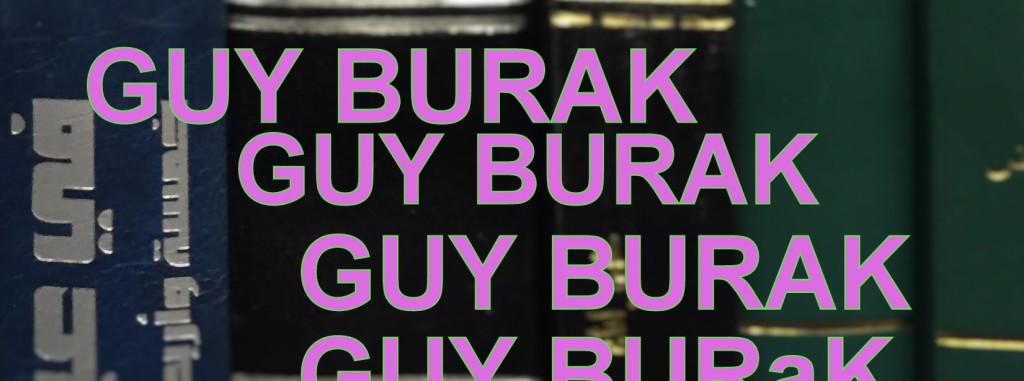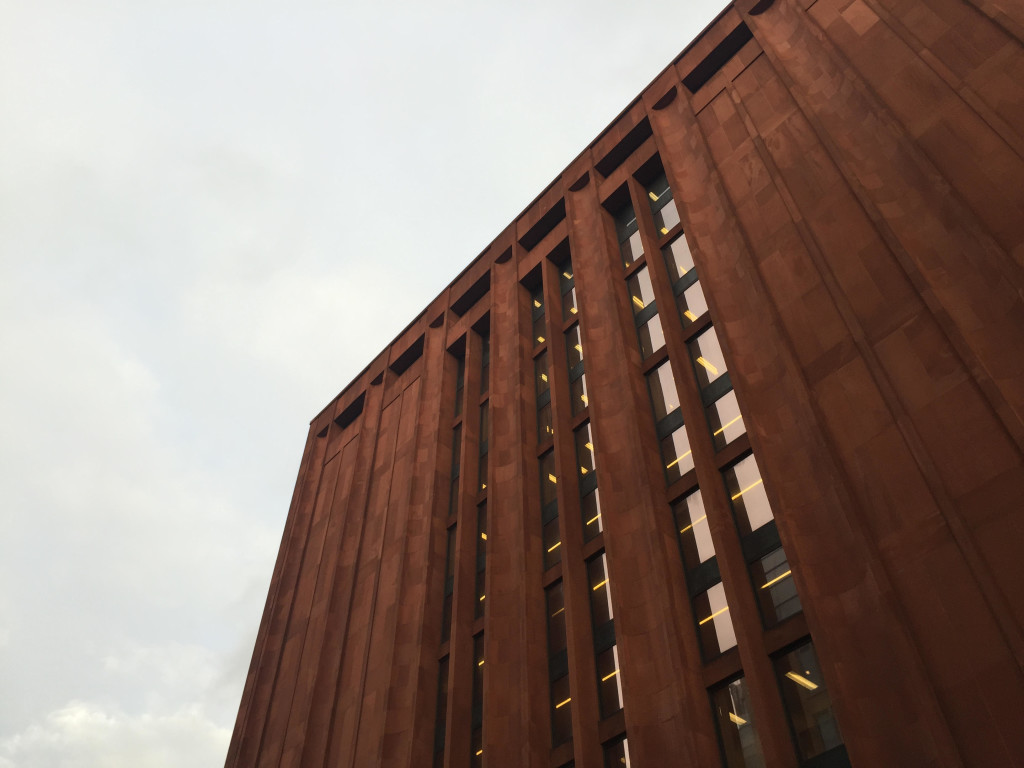 “Deep in the Stacks” is a new feature of HAZINE that highlights the work of librarians in shaping the research collections and agenda of the field of Islamic studies as a whole.
“Deep in the Stacks” is a new feature of HAZINE that highlights the work of librarians in shaping the research collections and agenda of the field of Islamic studies as a whole.
Our first interview is with Guy Burak, Middle East Librarian at the Elmer Holmes Bobst Library at New York University, guides.nyu.edu/mideast.
How did you get interested in library work?
I got interested in library work as a user in graduate school. At NYU, I worked quite closely with Peter Magierski (currently the Middle East librarian at Columbia). Then my dissertation research took me to other libraries in the Middle East, Europe and the US. Academically, I’m very interested in the circulation of texts, manuscripts and knowledge throughout the Islamic world, so in many ways I had been thinking about collecting and collections long before I became a librarian.
Tell us a bit about the patrons that your library serves, how would you describe the community?
Like most major research libraries, NYU’s Bobst Library serves the University globally (as NYU has portal campuses in Abu Dhabi and Shanghai and numerous study abroad sites), the broader academic community and, even more generally, the public. Although the physical access to most of our collection is restricted to scholars and students affiliated with NYU, we share our resources through interlibrary loan services and other consortia NYU is part of. Our special collections are open to the public. We are also in the process of digitizing much of our Arabic collection as part of the Arabic Collections Online (ACO).

What do you think is unique to the collection or resources at your library?
In comparison to other research libraries, NYU’s collection is fairly young. That said, over the years NYU has built strong Arabic, Persian and Turkish/Ottoman collections. In addition, NYU has some interesting special collections, such as the largest collection in country of cookbooks (including cookbooks from the Middle East), a large collection of Afghan materials (now digitized as part of the Afghanistan Digital Library), a sizeable collection of Persian lithographs and an interesting collection of Ottoman books from the Hamidian period.
Collection management is often a creative act. How you see yourself shaping the collection?
One of the most exciting things about being a librarian or a curator is trying to imagine the potential use of materials – be they books, artifacts, or video and sound recordings – beyond the current state of the academic field. I sometime try to imagine a future reader and guess what she would like to know about the Middle East and the Islamic world. This exercise often guides my cataloging and curatorial decisions.
At the same time, I’m trying to bring materials to the attention of potential users, mostly graduate students who are looking for research topics for their seminar papers or dissertations.
What are you priorities and dreams for the collection? Are there digital resources that you are excited about collecting?
My main priority is serving the Library’s users. In the near future, I intend to build on the strengths of NYU’s collections and keep expanding our Arabic, Persian, and Turkish collections. I hope to devote more time to enhancing existing special collections and building new ones. As I said, I am also thinking about digitizing (selectively) the collection of Hamidian books. In the more distant future, I hope NYU will be able to embark on the second phase of the Afghanistan Digital Library, covering Afghan materials from later decades.
Have you identified any areas of the collection that you hope to digitize? Which ones?
NYU is already in the process of digitizing significant parts of its collections as part of the Arabic Collections Online and the Afghanistan Digital Libraries. Once we finish cataloging the Hamidian books, we hope to digitize them as well, as they are very brittle.
Librarians working on the Middle East often find themselves addressing questions over cultural heritage. What do you see as some of the most pressing cultural heritage concerns in the Middle East?
Quite evidently the most pressing concern is the destruction of cultural heritage sites, such as museums and libraries, in warzones throughout the Middle East. A related concern is the appearance of looted manuscripts – some could be “blood manuscripts” – and artifacts on the markets.
What do you think are some challenges in librarianship that are unique to the Middle East? Alternatively what are its advantages?
All I can say about Turkish libraries is based on my work there as a researcher. The obvious advantages of Turkey are the size and quality of its manuscript collections and archives. To me, the most urgent challenge is making those unique materials discoverable (if not available) to different audiences – both academic and non-academic. An interesting challenge is how to standardize the transliteration of titles in Arabic, Persian, and Ottoman in Turkish catalogs. The other major challenge is that many resources and manuscripts are not adequately described.
That said, I can say that things have improved dramatically since I started working in Turkey more than a decade ago. Also – a young generation of librarians is doing very important work in enhancing metadata and digitization.
How do you see your institution as benefiting from international collaboration? Could it potentially address any of the challenges you mentioned previously?
NYU has been and still is involved in several international collaborative projects, such as the Afghanistan Digital Library and ACO (AUB is one of the contributors to the project). That said, the collaboration with libraries in the Middle East and North Africa is still fairly limited. There are several reasons for this situation, the most significant of which are different practices and workflows (such as different cataloging conventions) and legal issues.
What do you think are some of the most exciting developments in libraries and librarianship right now, here or elsewhere?
To my mind, the most exciting development is the growing integration on different levels of the library and the cultural heritage worlds (in projects such as Europeana and Digital Public Library of America). The other exciting and challenging development is the collection and archivization of new contents, formats, and media.
Finally, what is the best reference question you have received?
It really depends on how you define what a “good” question is. I enjoy challenging queries that involve getting materials from obscure collections and small vendors. One of our users was interested in pamphlets published in late Ottoman Syria. It took me a few days to find them. In other instances, a “good” question is good because I’m interested in those questions. One of our graduate students, for example, wrote a very interesting thesis on the history of Middle Eastern studies collections during the Cold War and discussing the project with him was real fun.

this is great! I am diving into the ACO as we speak
That’s good to hear!
very intresting reading. thanks to Hazine folks who do a wonderful job with regard to sources & resources.